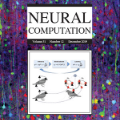Motion during acquisition of a set of projections can lead to significant motion artifacts in computed tomography reconstructions despite fast acquisition of individual views. In cases such as cardiac imaging, motion may be unavoidable and evaluating motion may be of clinical interest. Reconstructing images with reduced motion artifacts has typically been achieved by developing systems with faster gantry rotation or using algorithms which measure and/or estimate the displacements. However, these approaches have had limited success due to both physical constraints as well as the challenge of estimating/measuring non-rigid, temporally varying, and patient-specific motions. We propose a novel reconstruction framework, NeuralCT, to generate time-resolved images free from motion artifacts. Our approaches utilizes a neural implicit approach and does not require estimation or modeling of the underlying motion. Instead, boundaries are represented using a signed distance metric and neural implicit framework. We utilize `analysis-by-synthesis' to identify a solution consistent with the acquired sinogram as well as spatial and temporal consistency constraints. We illustrate the utility of NeuralCT in three progressively more complex scenarios: translation of a small circle, heartbeat-like change in an ellipse's diameter, and complex topological deformation. Without hyperparameter tuning or change to the architecture, NeuralCT provides high quality image reconstruction for all three motions, as compared to filtered backprojection, using mean-square-error and Dice metrics.
翻译:在获得一套预测的过程中,尽管快速获得个人观点,但在计算断层造影的重建过程中,可导致大量运动文物。在心脏成像等情况下,运动可能是不可避免的,评价运动可能具有临床兴趣。通过开发更快的轨迹旋转或使用测量和(或)估计迁移速度的算法的系统,通常能够以减少运动文物来重建图像。然而,由于物理限制以及估计/衡量非硬性、时间差异和病人特定动作的挑战,这些方法的成功有限。我们提议了一个新的重建框架,即神经CT,以产生不受运动文物影响的时间解析图像。我们的方法采用的是神经隐含的方法,不需要对基本动作进行估计或建模。相反,边界是使用一个签名的远程矩阵和神经隐含框架来表示的。我们使用“逐个分析”来找出一个与已获得的罪恶图以及空间和时间一致性制约相一致的解决方案。我们用三个更复杂的情景来说明神经CT的效用:将一个螺旋反光化的图像转换成一个高层次结构,不至高层次结构,提供高层次的硬体结构的修改。



